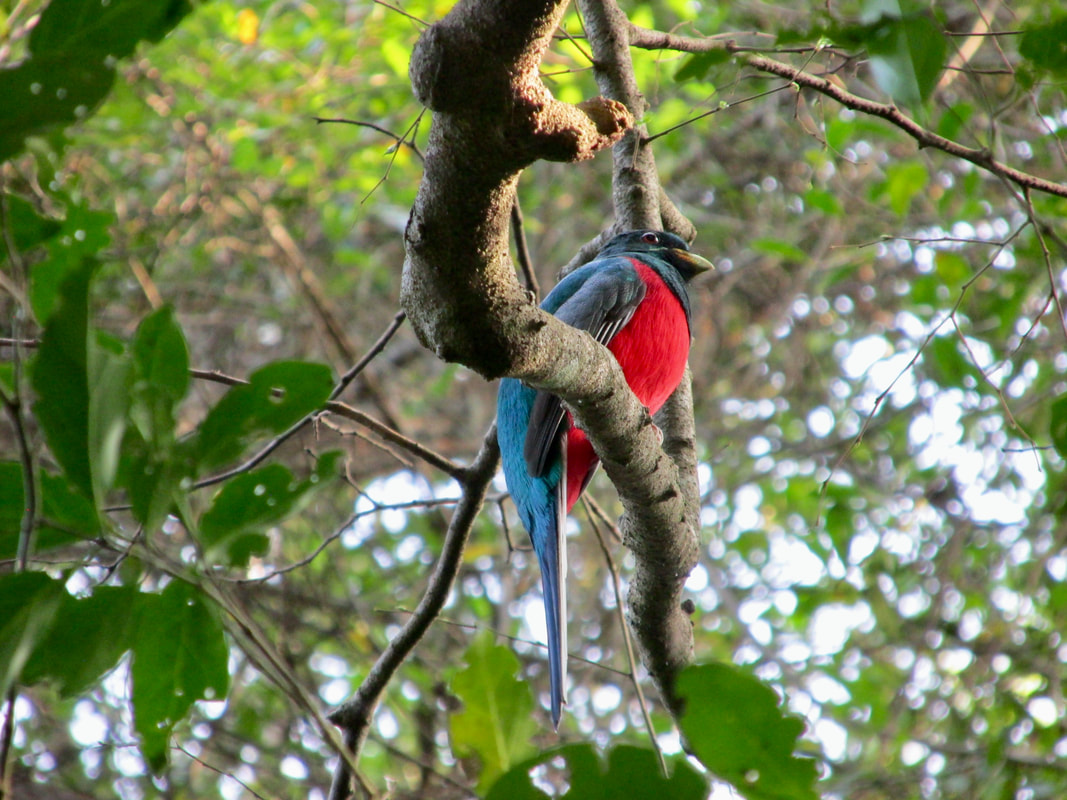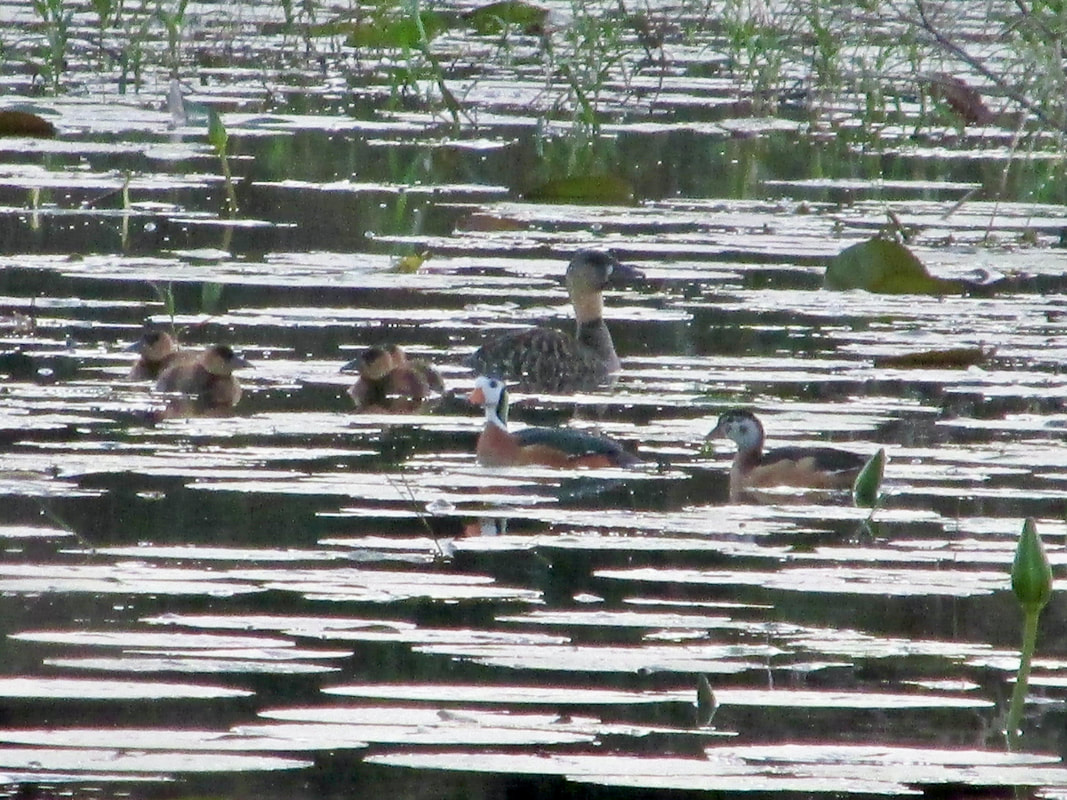|
There has been a proper feeling of Spring in the forest in the latter half of the month with many of the birds more vocal and busy in preparation for the breeding season. The male Narina trogons started calling midway through the month and we were lucky to observe their floating leks on a couple of occasions. Much of the action in the forest has been centred around fruiting fig trees, flowering Coral trees and the White stink woods which are pushing out new leaves and blossoms. The fruiting figs are attracting large groups of Trumpeter hornbill, African green pigeon, plenty White-eared barbets & Black-bellied starlings, Yellow-bellied & Sombre greenbul, Livingstone’s & Purple crested turaco and Yellow-rumped tinkerbird to name a few. Flowering coral trees are attracting Grey, Purple-banded, Olive & Collared sunbird and Eastern golden weaver. The White stinkwoods-and the insects and caterpillars attracted to their new shoots and blossoms- are attracting Klaas’ & African emerald cuckoo, Olive bush-shrike, Black cuckooshrike, Green malkoha and Rudd’s & Yelowbreasted apalis. Birding in the forest is always great at this time of year with increased bird activity, more light entering the forest with the sparse foliage and the fact that winter-visitors such as Spotted ground thrush, White-starred robin and Chorister robin-chat are still lingering. Other sightings in the forest during the month have included Buff-spotted flufftail, Blue-mantled crested flycatcher, Black-throated wattle-eye, Green twinspot, Grey waxbill, Brown scrub-robin, Square-tailed drongo, Dark-backed weaver to name a few. In the wetlands, as many as 4 Rufous-bellied heron are still regular on the Pan loop, Eastern shores, Isimangaliso. African pygmy-goose and White-backed duck remain pleasantly common. Other common waterfowl on the wetlands include White-faced whistling duck, Yellow-billed duck, Red-billed teal, Spurwinged goose, African spoonbill, African jacana, Striated heron, Intermediate egret, Black crake, Black-headed and Grey heron. A highlight during the month was a sighting of Allen’s gallinule. Wetland edges are producing an ever-increasing number of Collared pratincole as well as Pale-crowned, Rufous-winged & Croaking cisticola and Yellow-throated longclaw. Saddle-billed stork have also been a common sight over the month. Sections of the Eastern shores were burnt during the month and newly burnt areas (easier to spot prey)have been attracting a variety of raptors such as Brown, Black-chested and Southern-banded snake eagle, Bataleur, Martial eagle as well as scavenging birds such as Wooly-necked stork and Yellow-billed kite directly after the burn.
Lastly, the tern roost at the estuary has held Greater crested, Caspian, Little and Common tern. Other birds regular at the mouth and surrounding beaches have been African Black oystercatcher, Grey-headed gull, Cape gannet, Goliath heron, Western Osprey, African fish-eagle and Palm-nut vulture. Flocks of Lesser and Greater flamingo have also been around the estuary mouth in recent weeks. In the estuary narrows section we continued to enjoy regular sightings of Mangrove kingfisher during the month.
0 Comments
Leave a Reply. |







